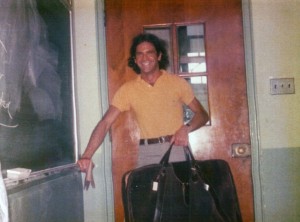(as posted on Medium, January 2014)
Though I’ve been reading scifi and fantasy since I was a kid, it wasn’t until I started working in the tech community that I learned about fan fiction (feel free to supply your own Venn diagram). What we usually think of as “fan fiction” may have begun as small circles of like-minded people swapping cheap photocopies but, with the internet serving as both incubator and distributor, it’s blossomed. Recent events, such as the continued whopping success of Fifty Shades of Grey and Hugh Howey bestowing his approval on Silo stories published under the new Kindle Worlds canopy, have pushed this form of storytelling smack dab into the middle of the main stream.
I don’t know why I’ve been thinking about this. Some of my own narrative fiction borrows generously from history, but not from other fiction (at least not consciously!). Nevertheless, as a consumer bombarded by sampling and re-boots and spin-offs, I find myself wondering: when we say “fan fiction,” what do we actually mean? I’ve always taken it to mean that the world of the story, or perhaps even some characters, are borrowed from another writer. Interesting that this describes an entire universe of Star Trek-inspired fiction and also applies to Terry Pratchett’s Dodger and Peter Carey’s Jack Maggs (both spun off from Dickens). So this category I have to call “possibly-fan-fiction” is limited neither to amateurs nor to those who want to extend a scifi universe.
There are any number of reasons why even an established writer might choose to take on someone else’s world. Backstories are particularly irresistable; after all, protagonists meet so many fascinating others. How can you help but try and imagine what it was that made Miss Havisham (Ronald Frame’s Havisham) or the Wicked Witch of the West (Gregory Maguire’s Wicked) what they were? Bertha Rochester was nothing but a plot device until Jean Rhys’s staggering Wild Sargasso Sea. As well as backstories there are sidebars, potentially fascinating “meanwhile, back at the farm” behind-the-scenes that run parallel to the thread of the source; consider Tom Stoppard’s brilliant Rosencrantz and Guildenstern are Dead, or Longbourn, Jo Baker’s recent “downstairs” view of Pride and Prejudice.
Sometimes there’s a desire to continue a popular story line after the death of the original author. Oz continued after Baum’s death, Bond after Fleming’s, just to name two. I should think that, regardless of whether writing out of love or for hire, a writer would need to be something of a fan to absorb him or herself in another person’s world to the extent necessary to continue it. So why aren’t such books referred to as fan fiction? Does the authorized passing of the torch, such as Brian Herbert continuing his father’s Dune world, or the Wodehouse estate’s endorsement of Sebastian Faulk’s Jeeves and the Wedding Bells, bestow sufficient gravitas on a work to place it on the “legitimate” shelf? If so, what about when authorization is a grey area or even a non-issue: the public domain Pride and Prejudice has inspired numerous spinoffs, sequels and riffs, for stage and screen as well as print; yet these, like the hundred of Holmes-inspired stories (and more to come, now that Holmes, too, is ruled to be in the public domain), many by notable writers, have never suffered from the fan fiction stigma.
Clearly it’s not just your co-worker or your best friend’s stepson who gets inspired by previous writers; some pretty big names have passed this way. What then decides how a work of fiction-inspired-by-other-fiction ought to be labeled? It would be simplistic to assume it’s based on the degree of reinvention or the quality of the writing. Personal taste makes quality subjective. For example, I agree that, despite its flaws, Margot Livesey’s 20th century version of Jane Eyre (The Flight of Gemma Hardy) belongs on the same shelf as her other work. On the other hand, although Geraldine Brooks’ March, a backstory of the father of the Little Women, won a Pulitzer, I was underwhelmed; if you’d passed it to me as a pdf and said it was a student exercise in creative writing, I’d have given it a B-minus.
Does the mere fact of mainstream publishing decide the point? Publishing is a form of educated gambling, relying on assumptions of marketability that are based on analysis of historic markets. Though widely-panned, Alexandra Ripley’s best-selling Scarlett proved to be a sound business call by Warner Books. It seems to me that commercial publishing houses have done well by harboring, perhaps nurturing, fan fiction all along! Good original writing, particularly by an unproven writer, is a much bigger gamble and often ends up on the slush pile. More and more writers, reactively or preemptively, are opting to forgo the appraisal process and are taking their original stories directly to the public, using the same self-publishing tools embraced by the fan fiction community. So Hugh Howey’s admirable original Wool was initially released with the same tools and in the same venue as the flow of Silo world fan fiction to which it gave rise.
The more I reflect on this, the more question marks and quotation marks I see. “Fan Fiction?” Is it an out-dated label or a charmingly Warholian hi/lo construct. Either way, with a culture that ever more embraces the comfort of the familiar, fiction-inspired-by-other-fiction is here to stay.

